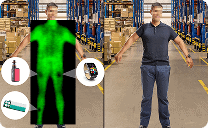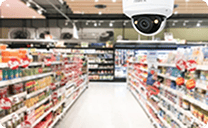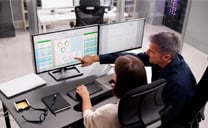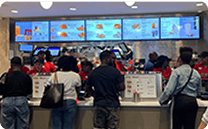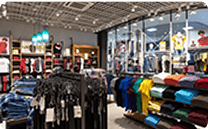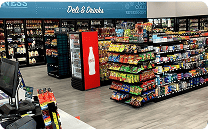In This article
Remote access is the key to flexibility in security and surveillance. It allows you to connect to systems, networks, or devices from virtually anywhere, using the internet or a private network. This flexibility enables continuous oversight, rapid response, and operational adaptability, especially beneficial for organizations managing multiple locations.
This technology allows authorized personnel, such as managers, IT staff, or loss prevention teams, to interact with the security infrastructure as if they were on-site. That interaction includes accessing live or recorded video from surveillance cameras, modifying access control permissions, reviewing alarm activity, and adjusting device settings.
How Remote Access Works
Remote access typically involves a combination of:
- Secure network protocols (e.g., VPN, HTTPS) to establish encrypted communication.
- Authentication mechanisms (e.g., usernames, multi-factor authentication) to ensure only authorized users with the necessary permissions gain entry.
- Cloud-based platforms that host data or interfaces off-site (accessible through web browsers or mobile apps)
In surveillance systems, IP cameras, NVRs, and integrated security software often support native remote access, allowing users to monitor video feeds, receive alerts, or review report data from any internet-connected device.
Benefits of Remote Access in Security Systems
Remote access is all about convenience and control in modern security operations. It brings you the ease of real-time monitoring, quick incident response, standardized oversight, and efficient system management, making your security operations more comfortable and manageable.
- Real-Time Monitoring: Users can view live camera footage or system dashboards from any location, helping them stay informed around the clock.
- Incident Response: Managers can respond quickly to alerts or suspicious activity, even off-site, by reviewing footage, contacting staff, or escalating issues.
- Operational Oversight: Multi-site businesses can use remote access to standardize oversight across locations and reduce the need for on-site visits.
- System Management: IT and security teams can perform updates, troubleshoot equipment, and manage system settings without traveling to each location.
For example, a retail operator might receive an alert about motion detection after-hours at a specific store. Through remote access, they can immediately review video footage, confirm the alert’s validity, and decide whether to notify law enforcement or dismiss it as a false alarm. This scenario demonstrates how remote access can expedite incident response and decision-making, even when the user is not physically present at the store.
Security and Best Practices
While remote access offers significant advantages, it also introduces cybersecurity risks if not adequately secured. To safeguard systems, businesses should:
- Use strong user identification protocols, such as two-factor authentication.
- Regularly update software and firmware.
- Enforce user permissions and role-based access.
- Monitor and log all remote sessions for auditing purposes.
- Partner with reputable vendors that use encrypted, cloud-based platforms.
When implemented with the necessary security precautions, remote access becomes an invaluable tool for efficiency, oversight, and incident response—especially for businesses with multiple locations.
Stay Connected from Anywhere with DTiQ
Remote access is more than a convenience—it’s necessary for fast-paced, multi-location operations. DTiQ empowers your team to stay connected with real-time access to surveillance footage, alerts, analytics, and case management tools from any device. Whether you’re monitoring retail stores, restaurants (inside and outside), convenience stores, or warehouses, DTiQ ensures you have visibility and control, no matter where you are. To learn more, visit our website.
